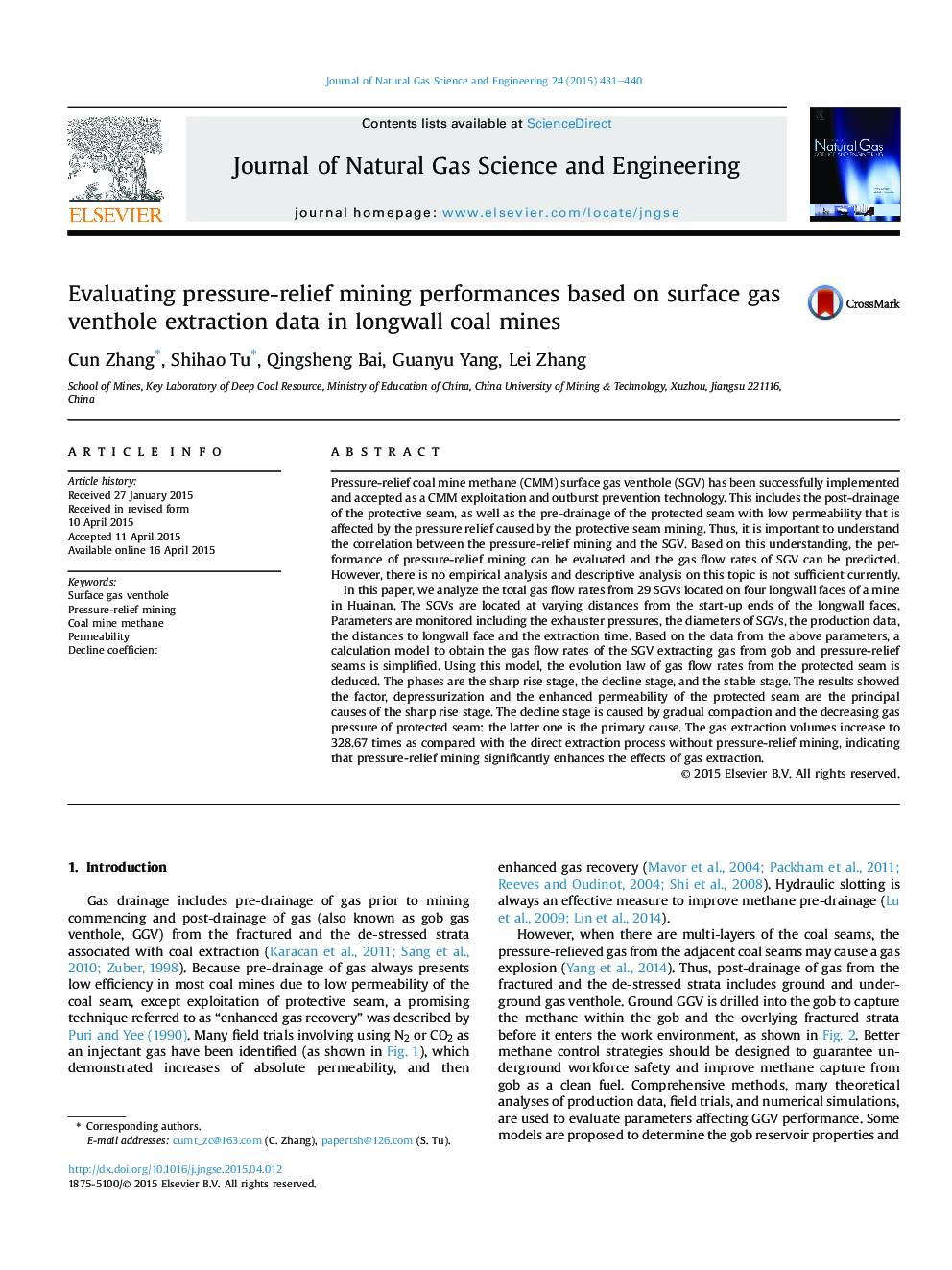| Article ID | Journal | Published Year | Pages | File Type |
|---|---|---|---|---|
| 1757435 | Journal of Natural Gas Science and Engineering | 2015 | 10 Pages |
•We analyze the total gas flow rates from 29 SGVs located on four longwall faces of a mine.•A calculation model to find the gas flow rates of the SGV extracting gas from gob and pressure-relief seams was simplified.•The evolution law of the gas flow rates from the protected seam and its influencing factors are deduced.•The performance of stress relief mining SGV is evaluated.
Pressure-relief coal mine methane (CMM) surface gas venthole (SGV) has been successfully implemented and accepted as a CMM exploitation and outburst prevention technology. This includes the post-drainage of the protective seam, as well as the pre-drainage of the protected seam with low permeability that is affected by the pressure relief caused by the protective seam mining. Thus, it is important to understand the correlation between the pressure-relief mining and the SGV. Based on this understanding, the performance of pressure-relief mining can be evaluated and the gas flow rates of SGV can be predicted. However, there is no empirical analysis and descriptive analysis on this topic is not sufficient currently.In this paper, we analyze the total gas flow rates from 29 SGVs located on four longwall faces of a mine in Huainan. The SGVs are located at varying distances from the start-up ends of the longwall faces. Parameters are monitored including the exhauster pressures, the diameters of SGVs, the production data, the distances to longwall face and the extraction time. Based on the data from the above parameters, a calculation model to obtain the gas flow rates of the SGV extracting gas from gob and pressure-relief seams is simplified. Using this model, the evolution law of gas flow rates from the protected seam is deduced. The phases are the sharp rise stage, the decline stage, and the stable stage. The results showed the factor, depressurization and the enhanced permeability of the protected seam are the principal causes of the sharp rise stage. The decline stage is caused by gradual compaction and the decreasing gas pressure of protected seam: the latter one is the primary cause. The gas extraction volumes increase to 328.67 times as compared with the direct extraction process without pressure-relief mining, indicating that pressure-relief mining significantly enhances the effects of gas extraction.
Graphical abstractFigure optionsDownload full-size imageDownload high-quality image (187 K)Download as PowerPoint slide
